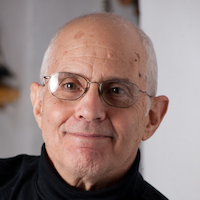Is Yoga at a Turning Point?
I wrote the following piece for the Huffington Post, and while it’s familiar territory for the denizens of Elephant I thought I’d post it anyway and see what you all have to say about it.
September is almost upon us, and that means it’s once again Yoga Month. Started in 2008 and designated a national observance by the Department of Health and Human Services, its organizers define it as “an awareness campaign to educate about the health benefits of yoga and to inspire a healthy lifestyle.” If you’ve been meaning to take a yoga class, this is your no-excuses opportunity, since one Yoga Month feature is the one week free yoga for new students at over 1200 studios.
One of the glories of the yoga tradition is that there’s something in it for everyone, whether you’re secular or spiritual, and whether
you want flexible joints, a trim butt, a calm mind, a loving heart or a faster lane to enlightenment. At its best, yoga can deliver on those rewards and others, depending on the student’s dedication and the knowledge and skill of his or her teachers.
That versatility means you will find a huge variation in style, approach, specialty and emphasis. But, despite the diversity, you will
probably find that at least 90 percent of every class is devoted to the stretches, bends and postures (asanas) that are now virtually synonymous with the word yoga. That fact has brought American yoga to an interesting moment in its brief and hugely successful history.
Ever since India’s repertoire of mental, physical and spiritual methodologies began attracting Americans more than a hundred years ago, its representatives have wrestled with the dilemma of cross-cultural adaptation: How to maintain the integrity and effectiveness of the teachings while adjusting them to the norms and nuances of the modern West. To cite one major example, 40 years ago, when a wave of scientific research carried transcendental meditation from the counterculture to the mainstream, the
practice shifted in the popular mind from one of consciousness expansion to one of relaxation and stress relief. Now, yoga — in which mental practices like meditation have been the primary focus until very recently — is undergoing a similar focus shift, from enlightenment to health, and the implications demand serious thought.
On the one hand, physical yoga, with its fitness, appearance and health benefits, draws more than 15 million Americans a year to
classes, prompting this satirical headline from The Onion: “One in Five Women Training to be Yoga Instructors.” On the other hand, yoga’s profound philosophical foundation and its catalog of non-asana practices have largely become add-ons, afterthoughts and esoteric diversions. Ask someone what yoga is and they are likely to talk about stretching and bending, not the union of the
self with the self of all, which is what the very word yoga (derived from the same root as yoke) has signified for centuries.
That yoga might become permanently identified with asana alone troubles many practitioners and teachers. It concerns me too, but I think it is unlikely to happen. For one thing, yoga’s deeper, more profound purpose is so compelling, so enticing, so embedded in the core of our being, that a large percentage of practitioners find their way to it, regardless of their
initial motivation. For another, leaders in the yoga community are taking steps to ensure that the full array of yogic teachings remains in the forefront, even while accommodating the immediate needs and desires of beginning students.
I became sanguine about this when interviewing yoga teachers for my book, “American Veda”, and in recent conversations with others. Just two weeks ago, I was on a panel on the topic in Los Angeles, at the Moksha Festival (moksha is one of several Sanskrit terms for spiritual liberation). The festival, called Yoga 2.0: The Second Coming of Yoga, was assembled by Arvind Chittumalla, the festival’s founder. Arvind and another participant, John Matthews, President of Yoga Alliance, proposed revamping
credentialing procedures to differentiate teachers who specialize in the physical and therapeutic aspects of yoga from those with a firm grasp of all eight limbs of classical yoga.
Keep all this in mind if you take up Yoga Month’s invitation to “create a more aware and healthy lifestyle” by visiting a yoga studio — at which point you’ll want to empty it from your mind. By September 30, you might be moved to conclude the month at the global community yoga practice, called The Time for Yoga. it will feature a 15-minute “meditation for universal peace and well-being.” If that’s too grandiose for you, do it for your own peace and well-being. That’s where it all begins.






Read 1 comment and reply